Fire Protection

Fire Extingushers
Fire extinguishers are portable and first line of defence, in case of fire, which has to be immediately stopped to limit damages.
Fire extinguishers are inspected for the state of readiness of the equipment in case of small accidental fire. All types of the fire extinguishers require periodic checkup, refilling, testing and service as required.



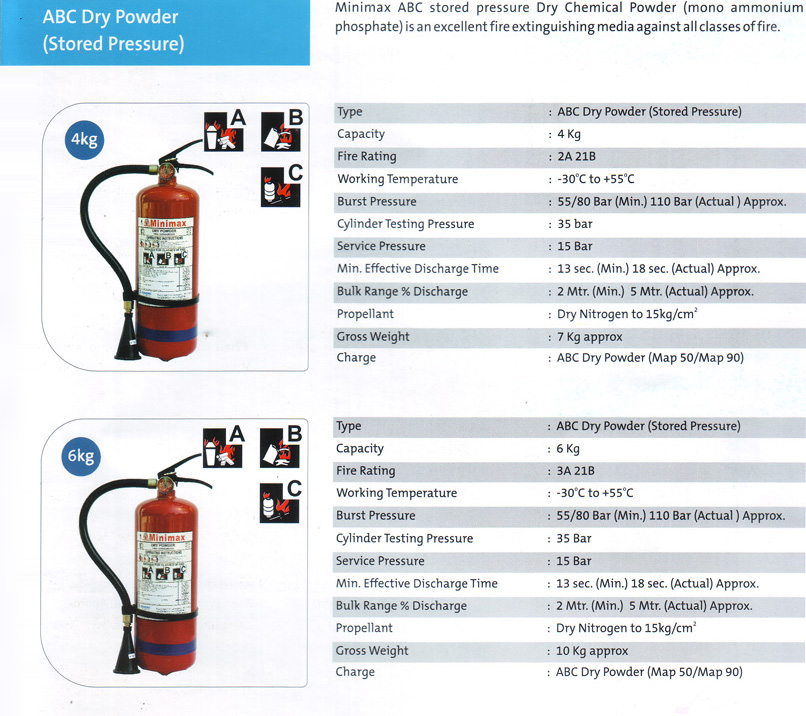

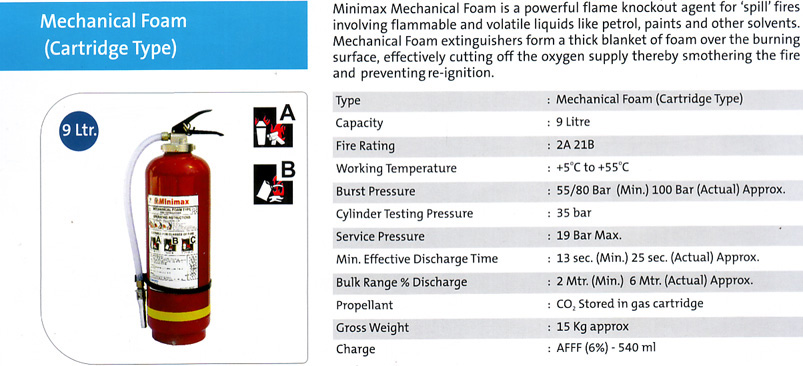
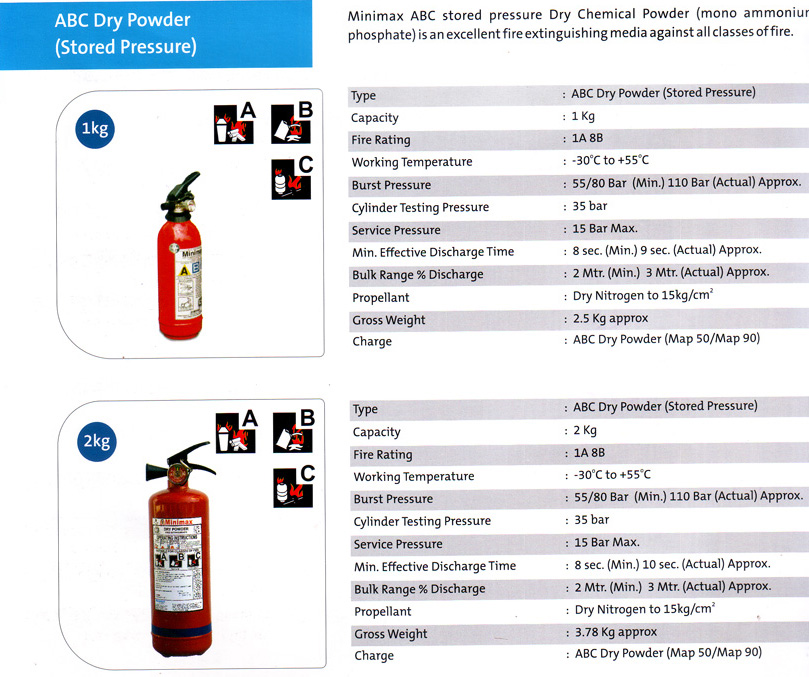
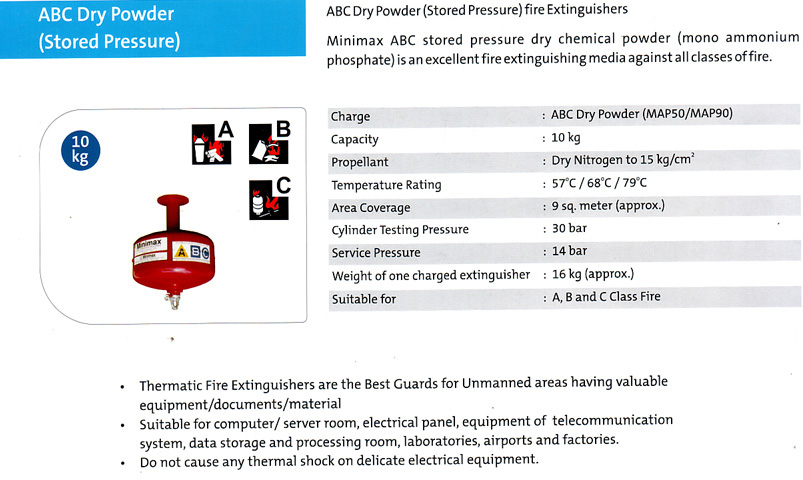
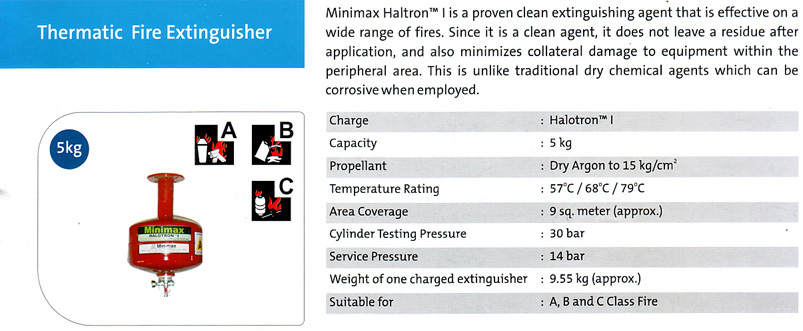
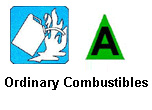
Classification Fire Extinguishers
Class A Extinguishers will put out fires in ordinary combustibles, such as wood and paper. The numerical rating for this class of fire extinguisher refers to the amount of water, the fire extinguisher holds and the amount of fire it will extinguish.
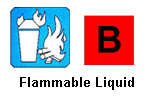
Class B Extinguishers should be used on fires involving flammable liquids, such as grease, gasoline, oil etc. The numerical rating for this class of Fire Extinguisher states the approximate number of square feet of a flammable liquid fire that a non-expert person can expect to extinguish.
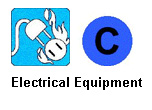
Class C Extinguishers are suitable for use on electrically energized fires. This class of fire extinguishers does not have a numerical rating. The presence of the letter "C" indicates that the extinguishing agent is non-conductive.
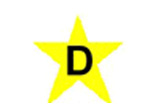
Class D Extinguishers are designed for use on flammable metals and are often specific for the type of metal in question. There is no picture designator for Class D extinguishers. These extinguishers generally have no rating nor are they given a multi-purpose rating for use on other types of fires.
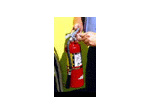
How to Use a Fire Extinguisher
Even though extinguishers come in a number of shapes and sizes, they all operate in a similar manner. Here's an easy acronym for fire extinguisher use:
P-A-S-S
Pull-Aim-Squeeze-Sweep
Pull the pin at the top of the extinguisher that keeps the handle from being accidentally pressed.
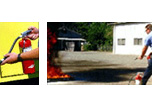
Aim at the base of the fire with the nozzle, not the flames in order to put out the fire, you must extinguish the fuel.
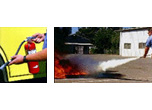
Stand approximately 6 feet away from the fire and Squeeze the handle to discharge the extinguisher. If you release the handle, the discharge will stop.

Sweep the nozzle back and forth at the base of the fire, using a sweeping motion, move the fire extinguisher back and forth until the fire is completely out. Operate the extinguisher from a safe distance, several feet away, and then move towards the fire once it starts to diminish.
After the fire appears to be out, watch it carefully, since it may re-ignite!
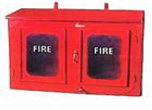
Hose Cabinet
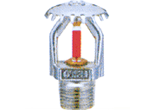
Sprinklers
Sprinkler System is a network of independent soldiers of sprinkler, which discharge water in case of fire. They work on the principle of heat. The network of pipes has sprinkler bulbs attached to the ceiling. When the heat of the area increases to 68 degrees Celsius, the Red colour liquid in the bulb starts boiling and hence breaks the glass bulb. On breaking the glass the opening is formed from where water is discharged in the form of a shower. This sprays continuous water thus cooling and blanketing the fire. Thus it needs to be functional always.
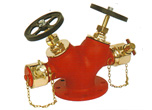
Valves
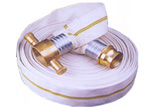
Hose pipes
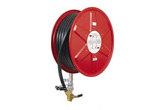
Hose Reels
These non-percolating Hose pipes discharge water, when the need arises to save the structure and contain large fires.

Coupling
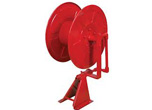
Hose reel Drum
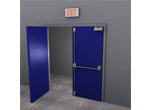
Fire Door

Electrical Duct Sealant
PASSIVE FIRE PROTECTION
Basic Philosophy: Stop the fire before it spreads.
Passive Fire Protection products are used to prevent the spread of fire along electrical cables / electrical shafts and communication cables in buildings & industries.
We would like to highlight that:
- Most fires are caused due to electrical faults and spread along electrical cables
- Life's are lost mainly because of smoke inhalation and not by fire alone
- Most buildings have installed expensive fire fighting systems, fire extinguishers and smoke detectors etc, for stopping or detecting of fire, after it has started
- Unlike passive fire protection Fire fighting systems need maintenance and testing regularly
- Products offered by us are from the most reliable and internationally approved manufacturer.
Use of our Cable Coating and Mortar now offers a safe and economical solution with the below mentioned advantages:
- Stops the fire at source for a period of 2 hrs
- Prevents smoke from spreading to adjoining rooms
- Offers protection at very affordable rates
- Allows sufficient time for fire fighting
- No maintenance required
- One time application
- Most experts realize and accept the importance of passive fire stopping products for safety.
So why not install these products, when it costs a fraction of what it would to fight a fire and protect lives.





 1
1 2
2 3
3 4
4